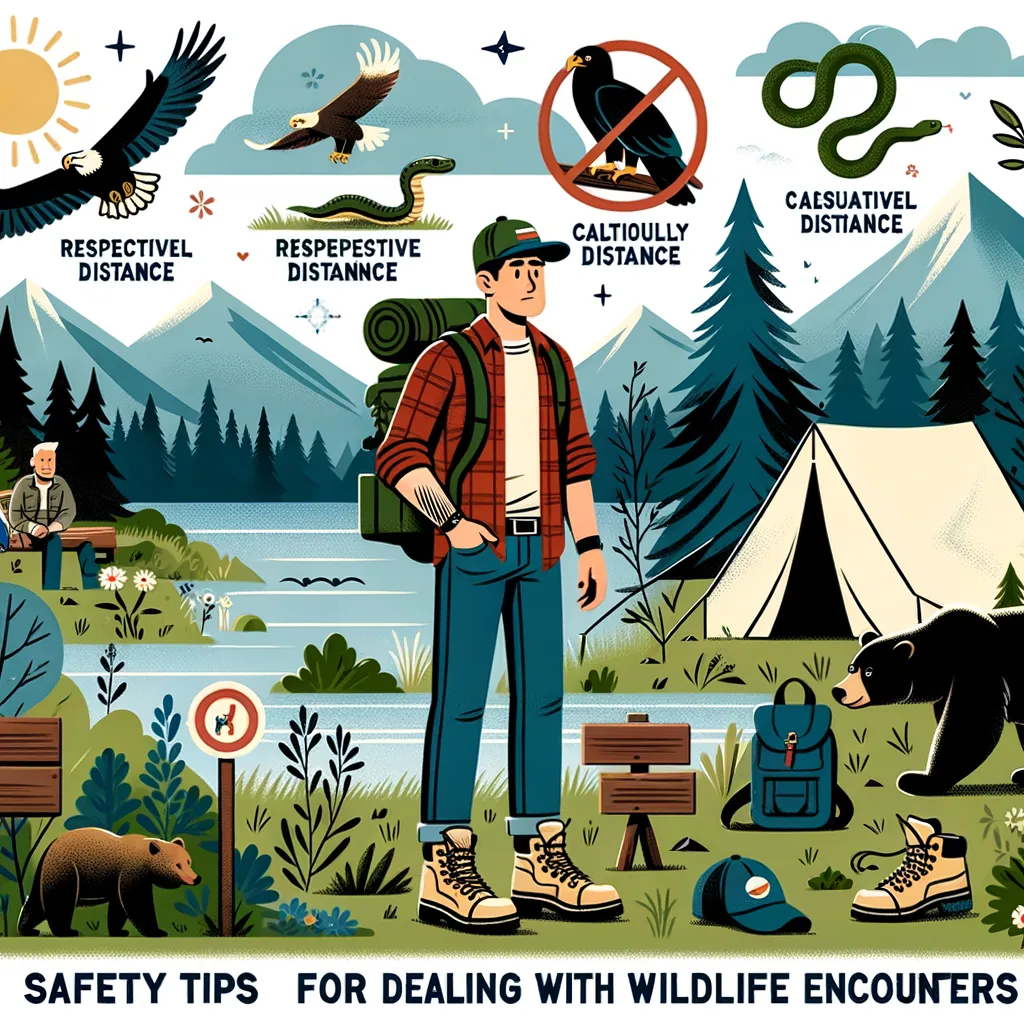Essential Safety Tips for Parents: Navigating Wildlife Encounters
Welcome to our comprehensive guide designed for parents who love to explore the great outdoors with their children. Encountering wildlife can be an awe-inspiring experience, emphasizing the beauty and wildness of our natural habitats. However, it’s crucial to approach such encounters with caution and preparedness. This guide aims to equip you with essential safety tips to ensure that your outdoor adventures remain memorable for the right reasons. Whether you’re camping, hiking, or simply exploring, safety is paramount.
Before venturing into the wilderness, familiarize yourself with the habitat and the types of wildlife you might encounter. Preparation is key to ensuring a safe and enjoyable experience for you and your family. For insightful information about preparing for your outdoor adventures, consider visiting Outdoors. Additionally, for those looking to enhance their camping knowledge, Great read on camping offers a wealth of information to get you started.
Understanding Wildlife Behavior
One of the first steps in ensuring your family’s safety is understanding the behavior of wildlife in their natural habitat. Animals act out of necessity—searching for food, protecting their young, or defending themselves. Recognizing these behaviors can help you better predict and avoid potential dangers.
Setting Boundaries
It’s essential to teach your children about the importance of maintaining a safe distance from wildlife. Explaining the concept of “invisible boundaries” can help them visualize how far they should stay away from animals, regardless of how friendly or calm they may appear.
Be Noise-Aware
Making a moderate amount of noise can help alert wildlife of your presence, reducing the chances of surprising an animal. However, it’s crucial to balance this with respect for nature and other adventurers by not being excessively loud or disruptive.
Storing Food and Trash Wisely
Properly storing food and disposing of trash can greatly reduce the risk of attracting wildlife to your campsite or picnic area. Utilize bear-proof containers when available, and never leave food unattended.
Through this guide, our goal is to empower parents with the knowledge and tools needed for safely navigating encounters with wildlife, turning potential challenges into opportunities for education and appreciation. By preparing adequately, respecting nature’s inhabitants, and practicing safety principles, families can enjoy the immense beauty and excitement the great outdoors has to offer. Stay tuned for more detailed tips on how to engage safely with specific types of wildlife, what to do if an encounter becomes dangerous, and how to teach your children about the significance of wildlife conservation.

5 Essential Safety Tips for Parents During Wildlife Encounters
Exploring the outdoors as a family can instill a deep appreciation for nature and wildlife in your children. Adventures in the wilderness provide invaluable lessons on environmental conservation, biology, and physical fitness. However, these excursions also require a level of respect and caution for the wildlife you may encounter. This guide provides parents with five essential safety tips to ensure peaceful, enjoyable, and safe wildlife encounters during outdoor adventures.
1. Educate Your Family About Local Wildlife
Knowledge is power, especially when it comes to interacting with wildlife. Before heading out, spend time with your children learning about the animals you might come across in your adventure area. Understand which animals are likely to be seen, their behavior patterns, what times of day they are most active, and the best ways to observe them without causing disturbance. Educational resources, such as National Geographic Animals, offer engaging content for young learners to understand wildlife better.
2. Practice Safe Food Handling and Disposal
The aroma of food can attract wildlife from miles away. Always use bear-proof containers and lock food away in your vehicle or designated storage units when camping. Remind your children never to feed wildlife, as this can encourage dangerous behavior patterns and dependency on human-provided food. Demonstrating proper food disposal and explaining the reasons behind these practices can be a valuable lesson in responsibility for children.
3. Maintain a Safe and Respectful Distance
Instilling a sense of respect for nature in your children includes teaching them to observe wildlife from a safe distance. Use binoculars for close-up views and always stay on marked trails when hiking or exploring. Help your children understand that approaching or attempting to touch wildlife can be stressful for the animals and dangerous for humans. Emphasize the importance of preserving the natural behavior of wildlife and minimizing human impact on their habitats.
4. Stay Calm and Collected During Encounters
In the event of a surprise wildlife encounter, remaining calm is crucial. Educate your family on how to slowly and quietly back away from animals, avoiding sudden movements or loud noises that could provoke stress or aggression. Have a plan for each type of animal you might encounter, from bears to snakes, and review this with your children regularly. Calm, knowledgeable reactions can prevent a curious observation from turning into a dangerous situation.
5. Lead by Example: Teach Through Action
Children learn best through observation. Demonstrating respect for wildlife, practicing safe behavior, and adhering to park rules and guidelines shows your children how to coexist peacefully with nature. Volunteer for local conservation efforts or participate in clean-up activities to further illustrate the importance of protecting natural habitats. These actions reinforce the message that we share the planet with wildlife and have a responsibility to protect their homes.
Adventuring into the great outdoors with your family can be one of the most rewarding experiences, fostering a lifelong connection with nature. By preparing adequately, respecting wildlife, and practicing safety principles, parents can ensure that their outdoor adventures remain memorable for all the right reasons. Remember, the goal is not just to enjoy nature but to pass on a legacy of conservation and respect for wildlife to your children. Let the wilderness be your classroom where lessons of life, respect, and coexistence are taught through the beauty of the natural world.
Disclaimer
The articles available via our website provide general information only and we strongly urge readers to exercise caution and conduct their own thorough research and fact-checking. The information presented should not be taken as absolute truth, and, to the maximum extent permitted by law, we will not be held liable for any inaccuracies or errors in the content. It is essential for individuals to independently verify and validate the information before making any decisions or taking any actions based on the articles.




